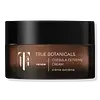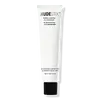What's inside
What's inside
 Key Ingredients
Key Ingredients

 Benefits
Benefits

 Concerns
Concerns

 Ingredients Side-by-side
Ingredients Side-by-side

Camellia Sinensis Leaf Extract
AntimicrobialAloe Barbadensis Leaf Juice
Skin ConditioningGlycerin
HumectantHydrogenated Vegetable Oil
EmollientMangifera Indica Seed Butter
Skin ConditioningHydrogenated Ethylhexyl Olivate
EmollientCetearyl Olivate
Sorbitan Olivate
EmulsifyingSilybum Marianum Ethyl Ester
Skin ConditioningTerminalia Chebula Fruit Extract
Skin ConditioningSodium Hyaluronate
HumectantCalendula Officinalis Flower Extract
MaskingRosa Rubiginosa Seed Oil
EmollientRubus Idaeus Seed Oil
EmollientHippophae Rhamnoides Seed Oil
Skin ProtectingSclerocarya Birrea Seed Oil
HumectantLactobacillus/Acerola Cherry Ferment
Skin ProtectingHydrolyzed Viola Tricolor Extract
Skin ProtectingPersea Gratissima Oil
Skin ConditioningSimmondsia Chinensis Seed Oil
EmollientLecithin
EmollientCaprylic/Capric Triglyceride
MaskingCarthamus Tinctorius Flower
MaskingEclipta Prostrata Extract
Skin ConditioningMelia Azadirachta Leaf Extract
Skin ConditioningMoringa Oleifera Seed Oil
EmollientPopulus Tremuloides Bark Extract
AntiseborrhoeicJuniperus Virginiana Oil
MaskingCananga Odorata Flower Oil
MaskingCedrus Atlantica Wood Oil
PerfumingAmyris Balsamifera Bark Oil
MaskingJuniperus Mexicana Oil
MaskingLavandula Angustifolia Oil
MaskingTocopherol
AntioxidantHydrogenated Olive Oil Unsaponifiables
EmollientLeuconostoc/Radish Root Ferment Filtrate
AntimicrobialXanthan Gum
EmulsifyingSodium Phytate
Phenethyl Alcohol
MaskingEthylhexylglycerin
Skin ConditioningCitric Acid
BufferingWater
Skin ConditioningCaprylyl Glycol
Emollient1,2-Hexanediol
Skin ConditioningLimonene
PerfumingLinalool
PerfumingCamellia Sinensis Leaf Extract, Aloe Barbadensis Leaf Juice, Glycerin, Hydrogenated Vegetable Oil, Mangifera Indica Seed Butter, Hydrogenated Ethylhexyl Olivate, Cetearyl Olivate, Sorbitan Olivate, Silybum Marianum Ethyl Ester, Terminalia Chebula Fruit Extract, Sodium Hyaluronate, Calendula Officinalis Flower Extract, Rosa Rubiginosa Seed Oil, Rubus Idaeus Seed Oil, Hippophae Rhamnoides Seed Oil, Sclerocarya Birrea Seed Oil, Lactobacillus/Acerola Cherry Ferment, Hydrolyzed Viola Tricolor Extract, Persea Gratissima Oil, Simmondsia Chinensis Seed Oil, Lecithin, Caprylic/Capric Triglyceride, Carthamus Tinctorius Flower, Eclipta Prostrata Extract, Melia Azadirachta Leaf Extract, Moringa Oleifera Seed Oil, Populus Tremuloides Bark Extract, Juniperus Virginiana Oil, Cananga Odorata Flower Oil, Cedrus Atlantica Wood Oil, Amyris Balsamifera Bark Oil, Juniperus Mexicana Oil, Lavandula Angustifolia Oil, Tocopherol, Hydrogenated Olive Oil Unsaponifiables, Leuconostoc/Radish Root Ferment Filtrate, Xanthan Gum, Sodium Phytate, Phenethyl Alcohol, Ethylhexylglycerin, Citric Acid, Water, Caprylyl Glycol, 1,2-Hexanediol, Limonene, Linalool
Water
Skin ConditioningPropanediol
SolventIsoamyl Laurate
EmollientGlycerin
HumectantNiacinamide
SmoothingSalicylic Acid
MaskingSqualane
Emollient3-O-Ethyl Ascorbic Acid
Skin ConditioningPolyacrylate Crosspolymer-6
Emulsion StabilisingSilica
AbrasiveSodium Hydroxide
Buffering1,2-Hexanediol
Skin ConditioningCaprylyl Glycol
EmollientSodium PCA
HumectantXanthan Gum
EmulsifyingMelaleuca Alternifolia Leaf Oil
AntioxidantSodium Phytate
Centella Asiatica Extract
CleansingAzelamidopropyl Dimethyl Amine
AntimicrobialPlatycarya Strobilacea Extract
Skin ConditioningPsoralea Corylifolia Fruit Extract
Skin ConditioningSophora Flavescens Root Extract
AntioxidantPhenoxyethanol
PreservativeButylene Glycol
HumectantSodium Hyaluronate
HumectantSaccharide Isomerate
HumectantAcetyl Glutamine
Skin ConditioningLecithin
EmollientBacillus/Folic Acid Ferment Filtrate Extract
AntioxidantActinidia Chinensis Fruit Extract
EmollientSh-Oligopeptide-1
Skin ConditioningSh-Oligopeptide-2
Skin ConditioningSh-Polypeptide-1
Skin ConditioningSh-Polypeptide-11
Sh-Polypeptide-9
Skin ConditioningLimonene
PerfumingWater, Propanediol, Isoamyl Laurate, Glycerin, Niacinamide, Salicylic Acid, Squalane, 3-O-Ethyl Ascorbic Acid, Polyacrylate Crosspolymer-6, Silica, Sodium Hydroxide, 1,2-Hexanediol, Caprylyl Glycol, Sodium PCA, Xanthan Gum, Melaleuca Alternifolia Leaf Oil, Sodium Phytate, Centella Asiatica Extract, Azelamidopropyl Dimethyl Amine, Platycarya Strobilacea Extract, Psoralea Corylifolia Fruit Extract, Sophora Flavescens Root Extract, Phenoxyethanol, Butylene Glycol, Sodium Hyaluronate, Saccharide Isomerate, Acetyl Glutamine, Lecithin, Bacillus/Folic Acid Ferment Filtrate Extract, Actinidia Chinensis Fruit Extract, Sh-Oligopeptide-1, Sh-Oligopeptide-2, Sh-Polypeptide-1, Sh-Polypeptide-11, Sh-Polypeptide-9, Limonene
 Reviews
Reviews

Ingredients Explained
These ingredients are found in both products.
Ingredients higher up in an ingredient list are typically present in a larger amount.
1,2-Hexanediol is a synthetic liquid and another multi-functional powerhouse.
It is a:
- Humectant, drawing moisture into the skin
- Emollient, helping to soften skin
- Solvent, dispersing and stabilizing formulas
- Preservative booster, enhancing the antimicrobial activity of other preservatives
Caprylyl Glycol is a humectant and emollient, meaning it attracts and preserves moisture.
It is a common ingredient in many products, especially those designed to hydrate skin. The primary benefits are retaining moisture, skin softening, and promoting a healthy skin barrier.
Though Caprylyl Glycol is an alcohol derived from fatty acids, it is not the kind that can dry out skin.
This ingredient is also used as a preservative to extend the life of products. It has slight antimicrobial properties.
Learn more about Caprylyl GlycolGlycerin is already naturally found in your skin. It helps moisturize and protect your skin.
A study from 2016 found glycerin to be more effective as a humectant than AHAs and hyaluronic acid.
As a humectant, it helps the skin stay hydrated by pulling moisture to your skin. The low molecular weight of glycerin allows it to pull moisture into the deeper layers of your skin.
Hydrated skin improves your skin barrier; Your skin barrier helps protect against irritants and bacteria.
Glycerin has also been found to have antimicrobial and antiviral properties. Due to these properties, glycerin is often used in wound and burn treatments.
In cosmetics, glycerin is usually derived from plants such as soybean or palm. However, it can also be sourced from animals, such as tallow or animal fat.
This ingredient is organic, colorless, odorless, and non-toxic.
Glycerin is the name for this ingredient in American English. British English uses Glycerol/Glycerine.
Learn more about GlycerinLecithin is a term for a group of substances found in the cell membranes of plants, animals, and humans. They are made up of mixture of phospholipids.
This ingredient has emollient and emulsifying properties.
As an emollient, lecithen helps soften the skin and creates a barrier to keep moisture in.
As an emulsifier, it also helps prevent water and oil ingredients from separating. Lecithin can also help ingredients be better absorbed by the skin.
This is because the phospholipids in lecithin produce liposomes. Liposomes help other ingredients get through the skin barrier.
Depending on the source of this ingredient, lecithin may not be fungal acne safe. This is because some sources of lecithin come from soybean oil, which may feed the malassezia yeast that feeds fungal acne.
We recommend reaching out to the brand you are purchasing from to inquire about the source of their lecithin.
Some other names for this ingredient include soy lecithin and deoiled soy lecithin.
Learn more about LecithinLimonene is a fragrance that adds scent and taste to a formulation.
It's found in the peel oil of citrus fruits and other plants such as lavender and eucalyptus. The scent of limonene is generally described as "sweet citrus".
Limonene acts as an antioxidant, meaning it helps neutralize free radicals.
When exposed to air, oxidized limonene may sensitize the skin. Because of this, limonene is often avoided by people with sensitive skin.
The term 'fragrance' is not regulated in many countries. In many cases, it is up to the brand to define this term. For instance, many brands choose to label themselves as "fragrance-free" because they are not using synthetic fragrances. However, their products may still contain ingredients such as essential oils that are considered a fragrance.
Learn more about LimoneneSodium Hyaluronate is hyaluronic acid's salt form. It is commonly derived from the sodium salt of hyaluronic acid.
Like hyaluronic acid, it is great at holding water and acts as a humectant. This makes it a great skin hydrating ingredient.
Sodium Hyaluronate is naturally occurring in our bodies and is mostly found in eye fluid and joints.
These are some other common types of Hyaluronic Acid:
Learn more about Sodium HyaluronateSodium Phytate is the synthetic salt form of phytic acid. Phytic acid is an antioxidant and can be found in plant seeds.
Sodium Phytate is a chelating agent. Chelating agents help prevent metals from binding to water. This helps stabilize the ingredients and the product.
Water. It's the most common cosmetic ingredient of all. You'll usually see it at the top of ingredient lists, meaning that it makes up the largest part of the product.
So why is it so popular? Water most often acts as a solvent - this means that it helps dissolve other ingredients into the formulation.
You'll also recognize water as that liquid we all need to stay alive. If you see this, drink a glass of water. Stay hydrated!
Learn more about WaterXanthan gum is used as a stabilizer and thickener within cosmetic products. It helps give products a sticky, thick feeling - preventing them from being too runny.
On the technical side of things, xanthan gum is a polysaccharide - a combination consisting of multiple sugar molecules bonded together.
Xanthan gum is a pretty common and great ingredient. It is a natural, non-toxic, non-irritating ingredient that is also commonly used in food products.
Learn more about Xanthan Gum